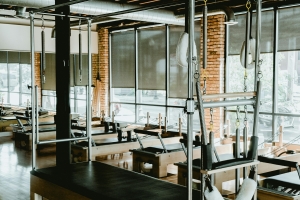6 Squat Variations - Results Guaranteed

Moving your knees in and excessively leaning forward are the two most common mistakes with squats. Dino Del Mastro, NASM Master Instructor, says that both these mistakes “lead to premature plateauing and significantly increase the likelihood of injury”.
So what is the proper form when you're performing a squat?
Start with your feet about shoulder-width apart. Your toes should be pointing forward with your back straight. Throughout the exercise, your head should be in a natural posture, and your eyes should remain forward. To carry out a squat with effective form, squeeze the glutes and pull the shoulder blades toward the spine. Push your feet apart as if you are trying to spread the floor, and descend as though you are about to sit in a chair. Your knees should remain in line with your toes and descend for a few seconds, and on your way to standing, carry this out in a one-second contraction.
Why Use Squats in Fitness
The squat is a move that has the ability to improve overall flexibility and strength. The following modifications are listed in order of difficulty. Every three to four weeks, you can increase the difficulty of the exercise by adding slow increases in weight.
1. Leaning Back Chair Squat
Using a suspension training system, stand holding onto the handles with your arms outstretched in front of your body. Facing forward with your head up, lean back into a squat over a chair, but do not touch the chair.
Equipment to Use
2. Squat with a Swiss ball
This version will activate both the core and target the quad muscles at the same time.
How to Perform
Place a Swiss ball between your lower back and the wall, hold your arms straight out in front of you and lower into a squat position.
Equipment to Use
3. Front Squat
With a weighted barbell resting on the front of the shoulders in an overhand grip, carry out a squat. Be sure to keep your elbows forward and palms facing the ceiling. To target your side glutes, carry out a wider stance by moving one foot a distance of heel to toe wider.
Equipment to Use
- Fixed weight or free weight barbell
4. Thruster
With your feet shoulder-width apart in a standing position, hold dumbbells next to your shoulders with your palms facing each other and squat, then return to standing, whilst lifting the dumbbells over your shoulders.
Equipment to Use
5. Overhead Squat
This exercise engages the core at an increased level in order to maintain stability and balance, in addition to helping you find body imbalances.
How To Perform
To carry out this variation, hold a barbell overhead with your arms in a wide grip.
Equipment to Use
6. Single-Leg Squat
On a knee-high bench, stand on one foot and put your arms out. Dip your body until you feel the other heel has touched the floor.






